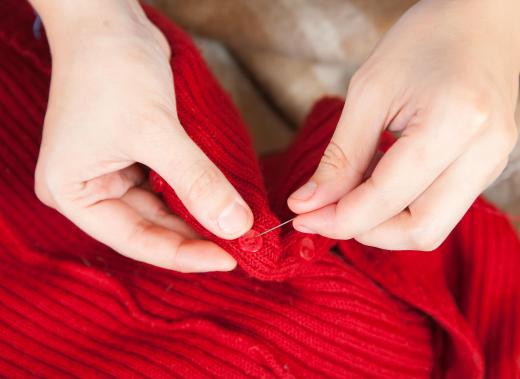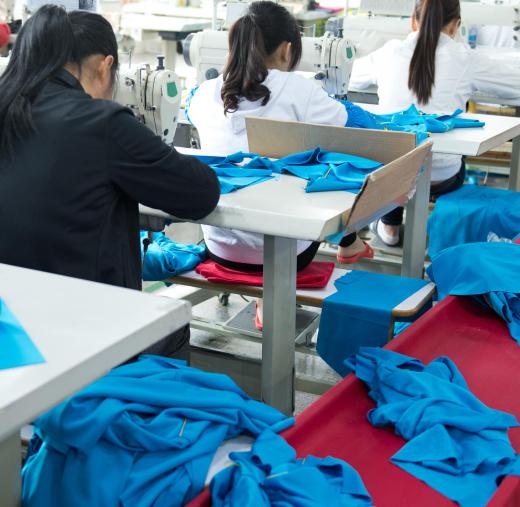The garment manufacturing process is the means through which articles of clothing are created for stores and other commercial outlets. It begins with clothing design, including fabric selection and the purchase of supplies. That fabric is then sent, along with patterns and specific instructions, to seamstresses and production specialists, many of whom work in factories or large-scale production centers. Once completed, the garments are inspected for quality control, appropriately labeled and tagged, and shipped to distribution centers. From there, the garments make their way to retail stores, where they are sold to the public.
As a concept, garment manufacturing is rather broad. The garment manufacturing process is how companies make clothes, and is what transforms designers’ ideas into everything from the season’s newest must-have pieces to basic wardrobe staples. It incorporates essentially every element of apparel manufacturing.

Depending on the context, clothing manufacturing can chart different courses. High-end designers have different garment manufacture processes than do national and international chain stores. Despite their differences, though, the concept of garment manufacturing remains constant.
In most cases, the garment manufacturing process begins with a design team. A design team is a group of artists and fashion experts on staff in the fashion company's headquarters. They receive advice from stylists and apparel industry analysts on what new trends are coming and what types of clothing features consumers are looking for.

Once the design team has come up with detailed sketches of new clothes, in-house stylists mock up samples, usually out of an inexpensive fabric. The goal here is to make any tweaks to how the finished product looks, as well as to get a more complete sense of how the piece fits and how appealing it is. Colors, fabric patterns, and fabric quality are also usually discussed at this phase. Other members of the fashion team begin searching for fabrics to buy, and negotiate prices for different textiles.
When the pattern has been finalized and the fabrics purchased, it is time to begin the process of actual garment creation. Most major retailers will send their orders to large garment factories for fulfillment. Workers in these factories engage in large-scale cutting and sewing to make apparel as ordered. Factory work often involves assembly lines, which enables workers to create a lot of items in not very much time.
The garment manufacturing process in these settings culminates with quality control, where defective or poorly made pieces are removed. Finished clothing is typically labeled while still in the factory, and then shipped to the fashion company’s distribution centers. From there, it is sent on either to stores or to the fashion house’s headquarters.
Mass-market clothing manufacturers, particularly those with hundreds of identical stores around the world, often focus more on quantity and cost-per-item than do designer and couture fashion houses. More exclusive fashion houses usually avoid factory work entirely. They will often create only a few samples of a new ensemble, then engage in manufacturing only for paid orders. The designer garment manufacturing process is usually done on a smaller scale, and is often more exacting.
